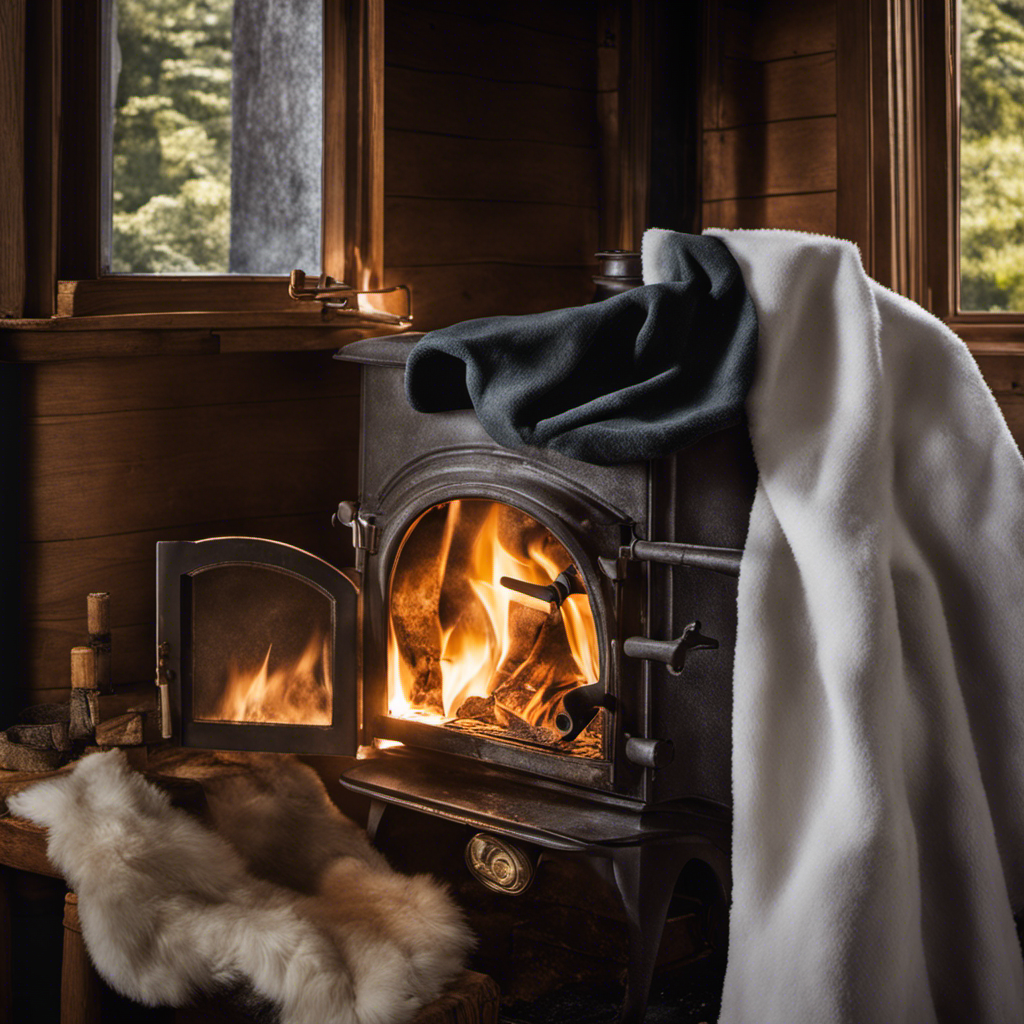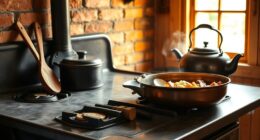As an experienced fan of wood stoves, I have encountered various issues with downdrafts. But do not worry, fellow stove owners!
In this informative video, I’ll guide you through the art of reversing a downdraft.
With step-by-step instructions and troubleshooting techniques, you’ll be able to banish those pesky downdrafts and enjoy a cozy, efficient fire.
So grab your tools and get ready to conquer the downdraft, because I’ve got the knowledge and expertise to help you succeed.
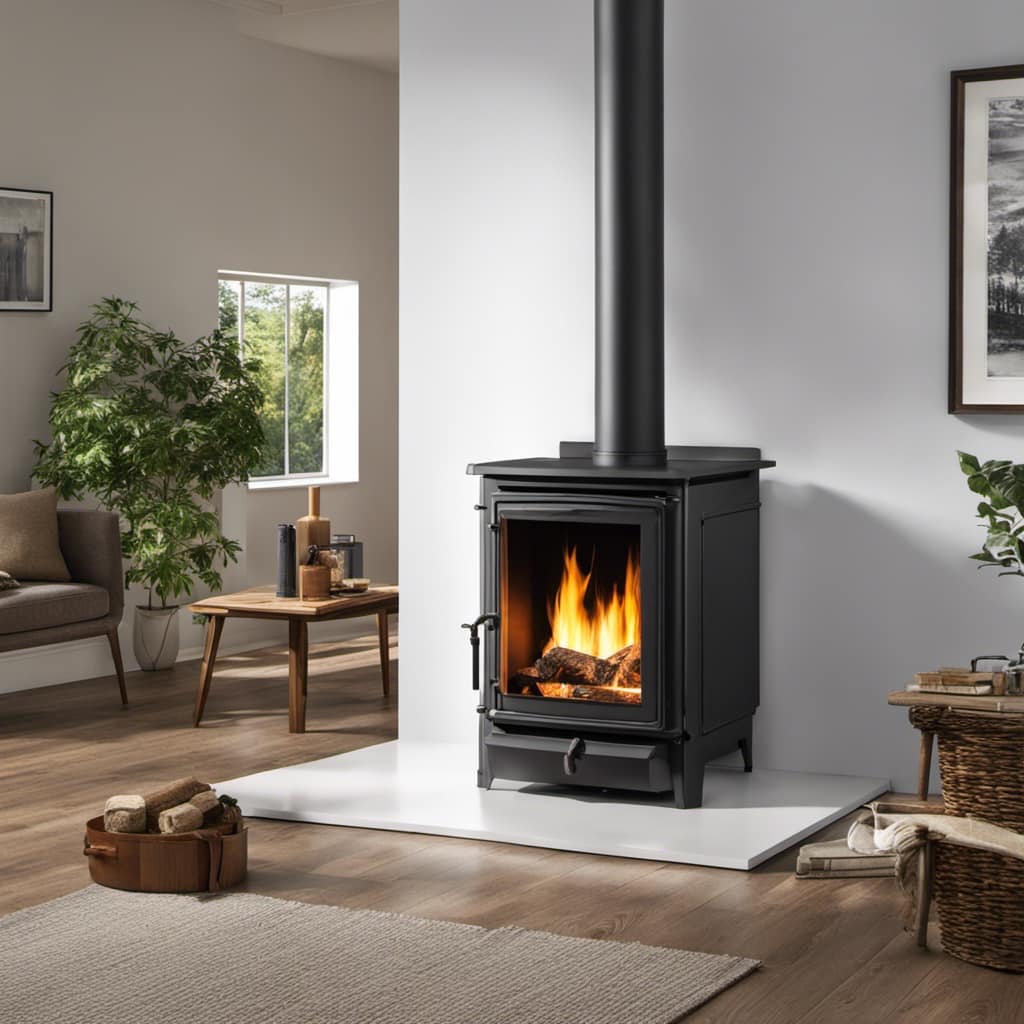
Let’s dive in!
Key Takeaways
- Downdrafts in wood stoves can be caused by insufficient chimney height, blocked chimney, and strong wind.
- Signs of a downdraft include smoke backing up into the home, difficulty in lighting or maintaining a fire, and unusual smells like smoke odor.
- Troubleshooting techniques such as adjusting the damper, ensuring sufficient clearance around the stove, and regular chimney cleaning can help reverse a downdraft.
- Preventing downdrafts in the future can be achieved through regular chimney inspection and cleaning, installing a chimney cap or draft inducer, properly sizing the wood stove, and ensuring proper home ventilation.
Understanding Downdrafts in Wood Stoves
Do I understand how downdrafts in wood stoves work?
Downdrafts in wood stoves occur when the exhaust gases from the fire aren’t properly vented out of the stove and instead, they flow back into the room. This can happen due to various common causes such as an insufficient chimney height, a blocked chimney, or even a strong wind blowing down the chimney.
It’s essential to take safety precautions to prevent these downdrafts, as they can lead to the buildup of dangerous carbon monoxide gas in the room. To avoid such hazards, it’s recommended to ensure the chimney is clean and clear of any debris, install a chimney cap to prevent wind interference, and have the chimney height properly adjusted to create a strong draft.

Identifying the Signs of a Downdraft
Am I able to recognize the signs of a downdraft in my wood stove? The answer is yes, and it’s crucial to be able to identify these signs to ensure the safety and efficiency of your wood stove. Here are three common signs of a downdraft, along with safety precautions to take:
-
Smoke Backing Up: If you notice smoke coming back into your home instead of rising up the chimney, it’s a clear indication of a downdraft. This could be caused by a blockage in the chimney or a lack of proper draft.
-
Difficulty in Lighting or Maintaining a Fire: If you struggle to get your wood stove lit or if the fire keeps going out, it could be due to a downdraft. Insufficient air supply or negative pressure in the room can cause this issue.
-
Unusual Smells: If you notice a strong odor of smoke or other unusual smells in your home, it could be a sign of a downdraft. This could indicate that the smoke isn’t being properly vented out of the chimney.
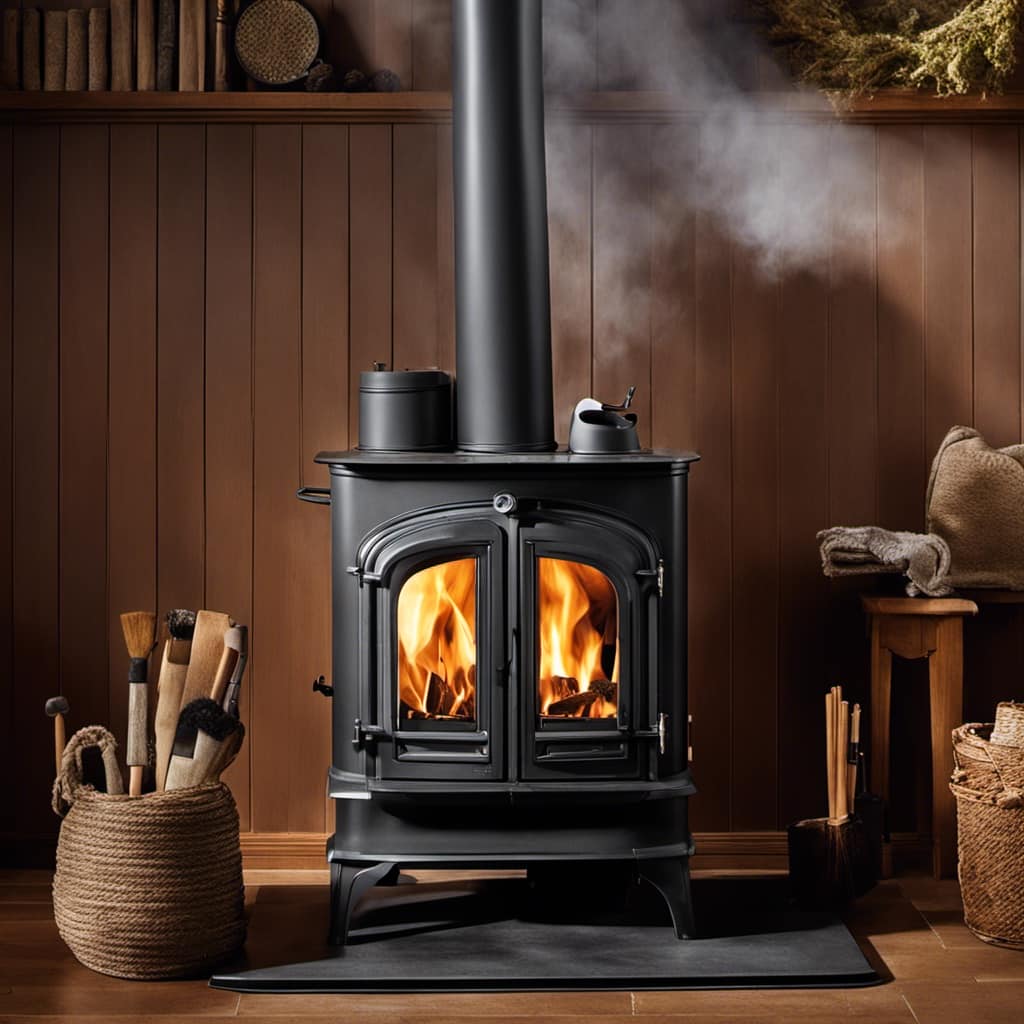
To ensure your safety and prevent potential hazards, it’s important to address downdraft issues promptly. Here are some safety precautions to consider:
-
Regular Maintenance: Schedule regular inspections and cleanings to ensure proper functioning of your wood stove and chimney.
-
Check for Blockages: Keep an eye out for any obstructions in the chimney, such as bird nests or debris, and remove them promptly.
-
Adjust Airflow: Properly adjust the air vents on your wood stove to ensure adequate airflow and prevent downdrafts.

Troubleshooting Techniques for Reversing a Downdraft
I’ve tried adjusting the air vents and cleaning the chimney, but the smoke still backs up into my home. If you’re experiencing this issue, don’t worry, there are troubleshooting techniques that can help reverse a downdraft in your wood stove.
One common mistake isn’t properly opening the damper. The damper controls the airflow and should be fully open when starting a fire.
Another mistake isn’t having enough clearance around the stove. Make sure there’s at least 36 inches of space around the stove to allow for proper airflow.
Additionally, a dirty chimney can cause a downdraft. Regular chimney cleaning is essential to prevent soot and debris buildup.
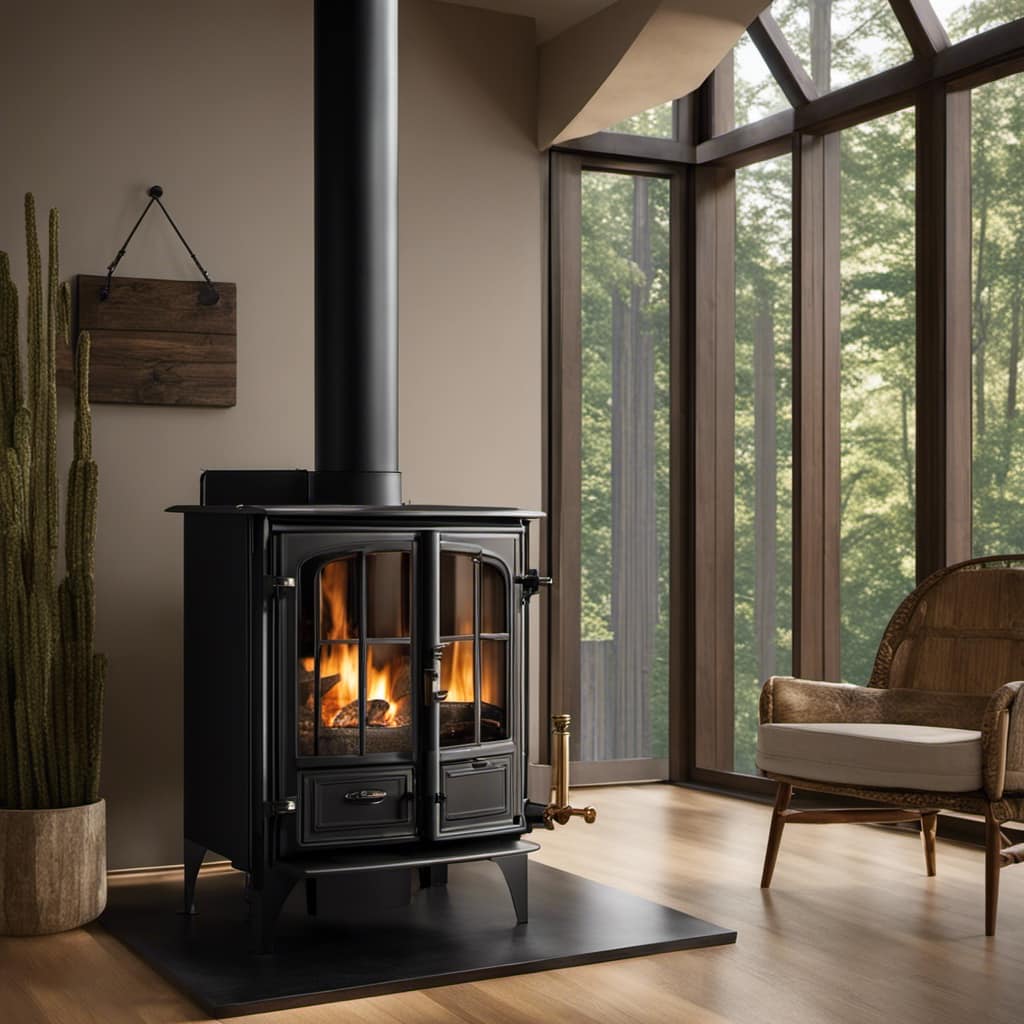
Finally, consider installing a chimney cap to prevent downdrafts caused by wind.
Step-by-Step Guide to Correcting a Downdraft
I’ve followed the step-by-step guide and successfully corrected the downdraft in my wood stove. It was a relief to finally resolve the issue and get my stove functioning properly again. In the process, I learned a few troubleshooting techniques that I’ll definitely keep in mind for the future.
Here are three key takeaways:
-
Check the chimney: A blocked or dirty chimney can often cause downdrafts. Regularly inspect and clean your chimney to prevent this issue.

-
Adjust the damper: The damper controls the amount of airflow in your stove. By adjusting it properly, you can optimize the draft and minimize downdrafts.
-
Use a chimney cap: Installing a chimney cap can help prevent downdrafts by blocking wind and debris from entering the chimney.
Tips and Tricks for Preventing Downdrafts in the Future
For preventing downdrafts in the future, I highly recommend regularly inspecting and cleaning your chimney to ensure it is not blocked or dirty. This is crucial in improving wood stove efficiency and preventing smoke from entering your home. Additionally, there are a few other tips and tricks that can help in preventing downdrafts. Firstly, consider installing a chimney cap or a draft inducer to create a positive pressure inside the chimney, thus preventing the downdraft. Secondly, ensure that your wood stove is properly sized for your home, as an undersized stove can lead to inefficient burning and increased chances of downdrafts. Finally, make sure that your home is properly ventilated, as poor ventilation can contribute to downdrafts. By following these steps, you can effectively prevent downdrafts and improve the efficiency of your wood stove.
| Tips for Preventing Downdrafts | Benefits |
|---|---|
| Regularly inspect and clean chimney | Improved wood stove efficiency |
| Install a chimney cap or draft inducer | Prevention of smoke entering your home |
| Ensure proper sizing of wood stove | Efficient burning and reduced downdrafts |
| Ensure proper home ventilation | Prevention of downdrafts |
Frequently Asked Questions
How Long Does It Usually Take to Reverse a Downdraft in a Wood Stove?
It usually takes some time to reverse a downdraft in a wood stove. There are several troubleshooting techniques that can be used, along with tips for maintaining proper airflow, to help address the issue.

Can a Downdraft in a Wood Stove Cause Any Damage to the Stove Itself?
Yes, a downdraft in a wood stove can cause damage. It can lead to excessive heat, which can warp the stove’s components and potentially cause cracks or other structural issues.
Are Downdrafts More Common in Certain Types of Wood Stoves?
Downdrafts in wood stoves can be caused by various factors, such as chimney height and wind conditions. Troubleshooting tips for different types of wood stoves include adjusting air intake and ensuring proper insulation.
What Are Some Common Mistakes People Make When Trying to Reverse a Downdraft?
Common mistakes when trying to reverse a downdraft include not checking for obstructions, improper damper adjustment, and insufficient insulation. Troubleshooting tips involve inspecting the chimney, adjusting air intake, and using a downdraft diverter.
Can a Downdraft in a Wood Stove Be Prevented by Using Certain Types of Wood or Fuel?
Certain types of wood or fuel can help prevent downdrafts in wood stoves. By using dry hardwoods like oak or maple, which burn hotter and produce less smoke, you can minimize the chances of a downdraft occurring. Additionally, proper stove installation and regular maintenance are key techniques to prevent downdrafts.
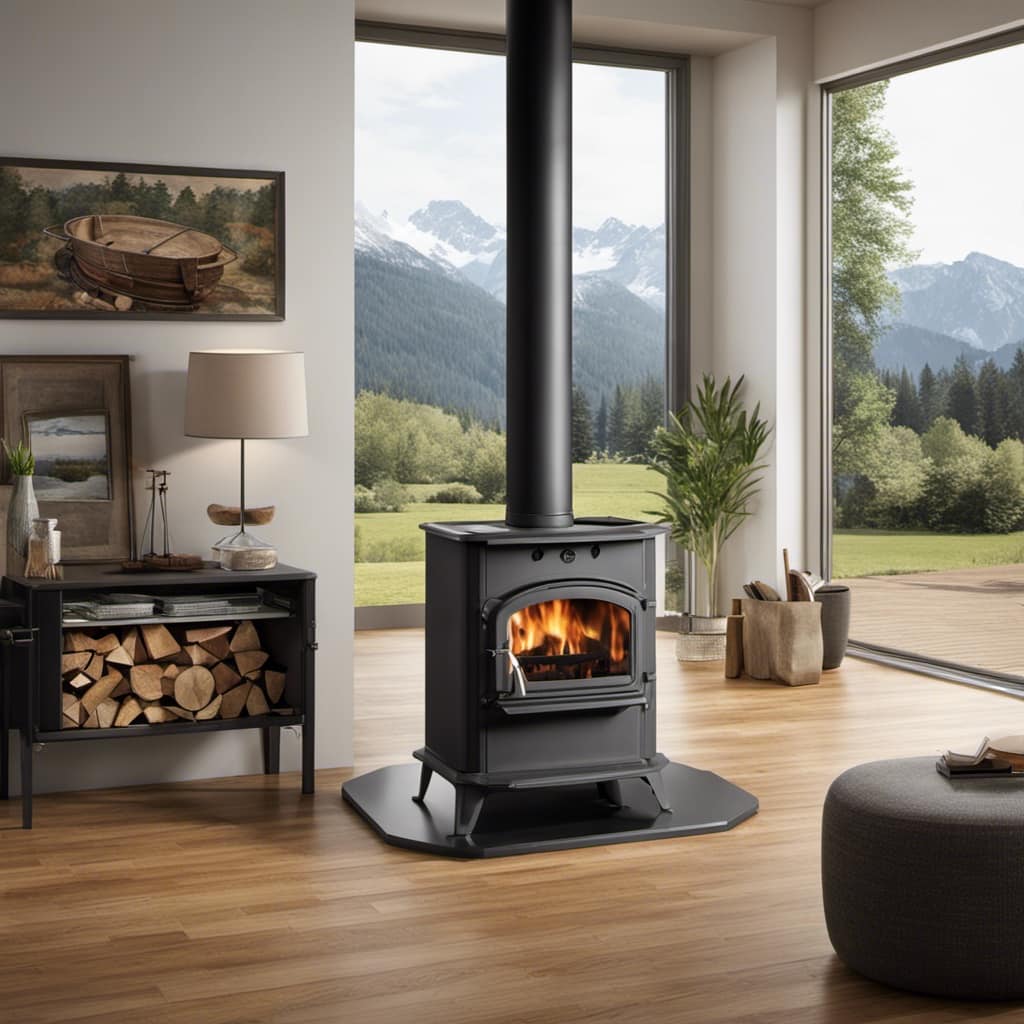
Conclusion
In conclusion, understanding and troubleshooting downdrafts in wood stoves is crucial for maintaining a safe and efficient heating system.
By identifying the signs, following the step-by-step guide, and implementing preventive measures, you can effectively reverse a downdraft and ensure proper ventilation.
So, why let a downdraft dampen your heating experience when you have the power to overcome it?
Take charge and enjoy the warmth and comfort of your wood stove without any interruptions.
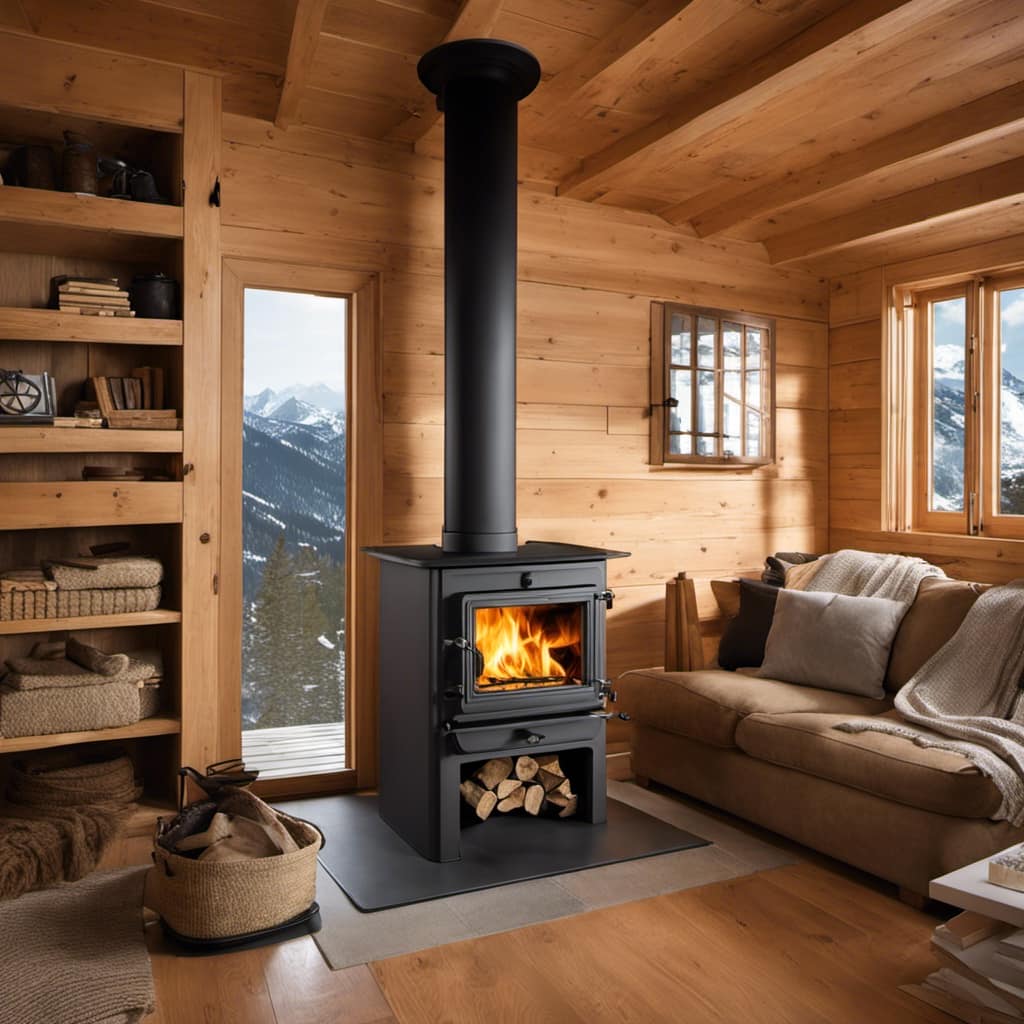
Growing up surrounded by the vast beauty of nature, Sierra was always drawn to the call of the wild. While others sought the comfort of the familiar, she ventured out, embracing the unpredictable and finding stories in the heartbeat of nature.
At the epicenter of every remarkable venture lies a dynamic team—a fusion of diverse talents, visions, and passions. The essence of Best Small Wood Stoves is crafted and refined by such a trio: Sierra, Logan, and Terra. Their collective expertise has transformed the platform into a leading authority on small wood stoves, radiating warmth and knowledge in equal measure.






